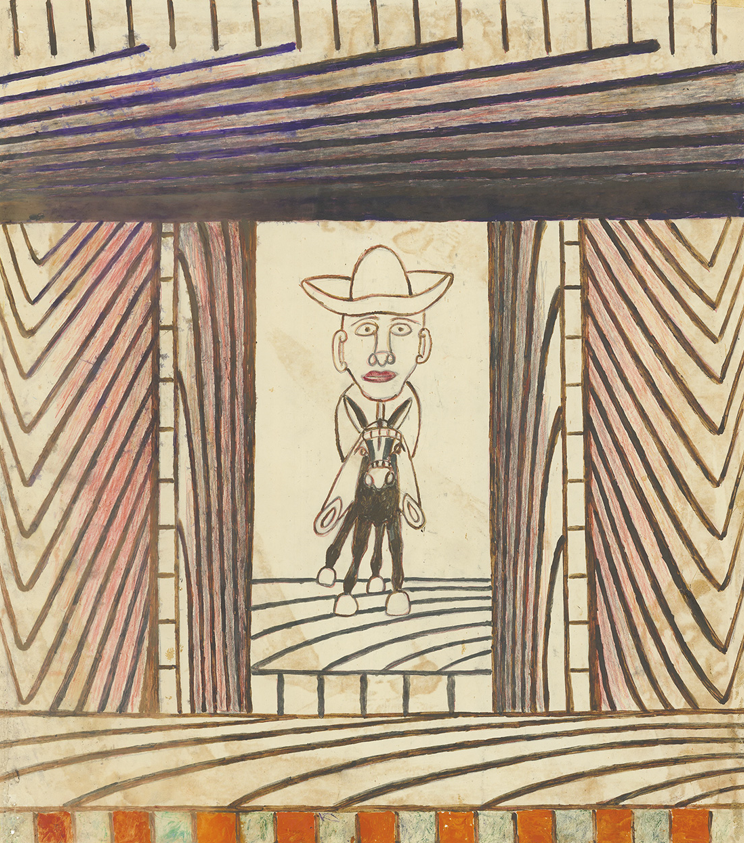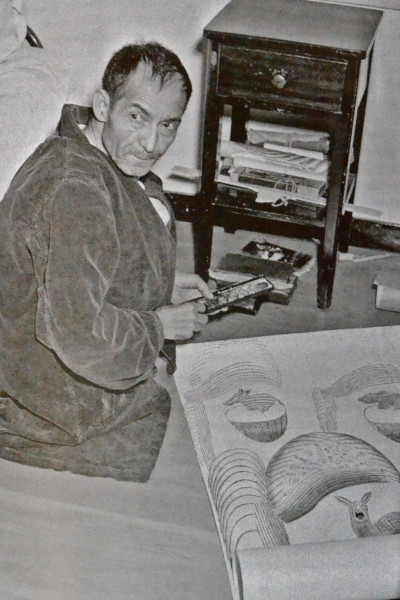Martin Ramirez
The technical skill, stylistic evolution, and thematic coherence of Ramírez led Roberta Smith of The New York Times to describe him as ‘simply one of the greatest artists of the 20th century.’ Ramírez’s talents were recognized early on in small exhibitions as early as the 1950s. Present in the guggenheim and moma collections, in 2010, the 20th-century master was the subject of a comprehensive exhibition organized by Brooke Davis Anderson at the Museo Nacional Centro de Arte Reína Sofía in Madrid, titled Martín Ramírez: Reframing Confinement. In 2015, the United States Postal Service issued a series of five commemorative stamps Martin Ramirez Forever.
Born in Jalisco, Mexico, Martín Ramírez is widely recognized as one of the leading self-taught artists of the 20th century. To support his family, Ramírez moved to the United States in 1925. He worked as an immigrant in Californian mines and railroads until he was arrested by the police in 1931. Ramírez was eventually diagnosed with schizophrenia. Initially institutionalized at the Stockton State Hospital, he was later transferred to DeWitt State Hospital in Auburn, where he spent the remainder of his life. It was there that he discovered art and created the intricate and captivating drawings and collages that brought him acclaim.
Throughout his life, Ramírez produced around 500 works characterized by bold and sharply delineated drawing. The imagery is both evocative and nostalgic, often recalling his own life experiences. Mexican madonnas, animals, cowboys, trains, and landscapes blend with scenes from American culture, providing a detailed documentation of a Mexican living and working in the United States. In terms of composition, he renders space multidimensionally, almost theatrically, using sharp geometric forms with strong linear qualities.

